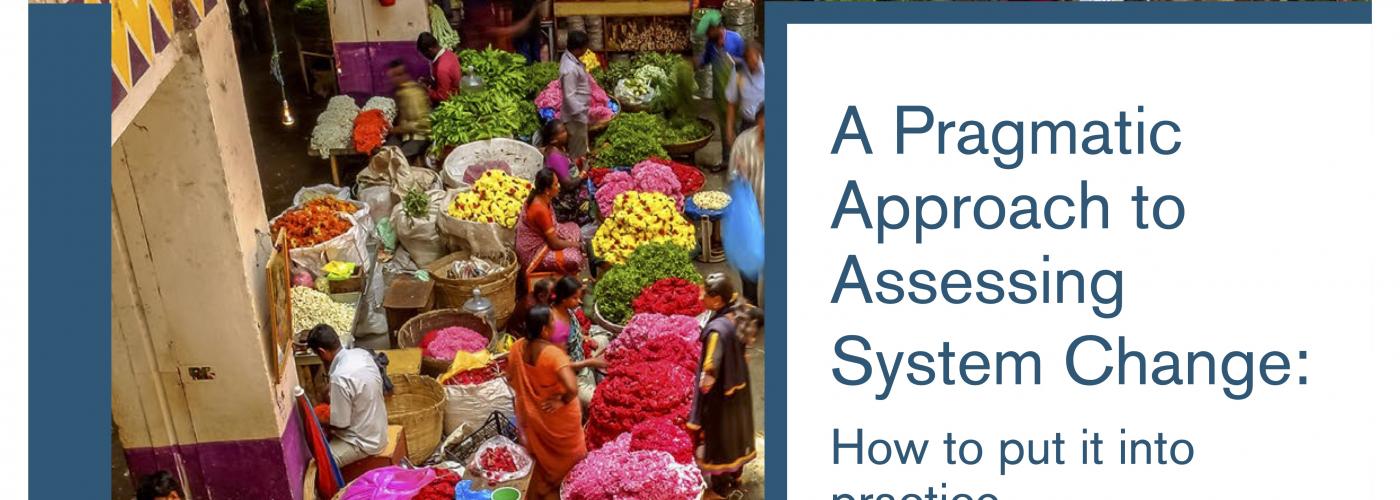A Pragmatic Approach to Assessing System Change
Image

Planning for and assessing system change is a strategic management issue. It is critical for everything from developing a strategy and designing interventions, to adapting strategy, improving implementation and reporting impact.
But many programs get stuck when it comes to assessing system change. The private sector development field has struggled to agree on an approach that programs can implement and stakeholders can understand.
However some mature programs are starting to assess system change more effectively. Building on these emerging practices, these papers outline a process that programs can use to assess system changes regularly and practically. The 'Overview' summarises the approach and 'How to put it into practice' provides more detailed implementation guidance, worked examples, and useful tips.
A 'Pragmatic Approach to Assessing System Change: Overview' explores how to:
- develop a system change strategy and intervention plans that lay the groundwork for system change assessment, including how to set system boundaries and how to identify the system changes a program aims to catalyse
- assess system changes using both:
- an intervention lens focused on changes introduced by specific interventions
- a helicopter lens that provides a whole system view.
By analysing findings from both lenses, programs can improve their strategy and report on their contribution to system change.
'A Pragmatic Approach to Assessing System Change: How to put it into practice' uses two case examples for illustration throughout the paper - PRISMA’s work in the maize system in East Java, Indonesia and S4J’s work in the Vocational Education and Training (VET) system in Albania. It targets practitioners responsible for facilitating and/or assessing system change.
The paper explains how to:
- articulate the system changes that a programme aims to catalyse
- assess those changes
- use the results to inform decision making and reporting.
The approach described in the papers builds on the practices outlined in the DCED Results Measurement Standard. The guidance provided has been designed to be useful to programs that aim to catalyse system changes whether or not they apply the DCED Standard.

